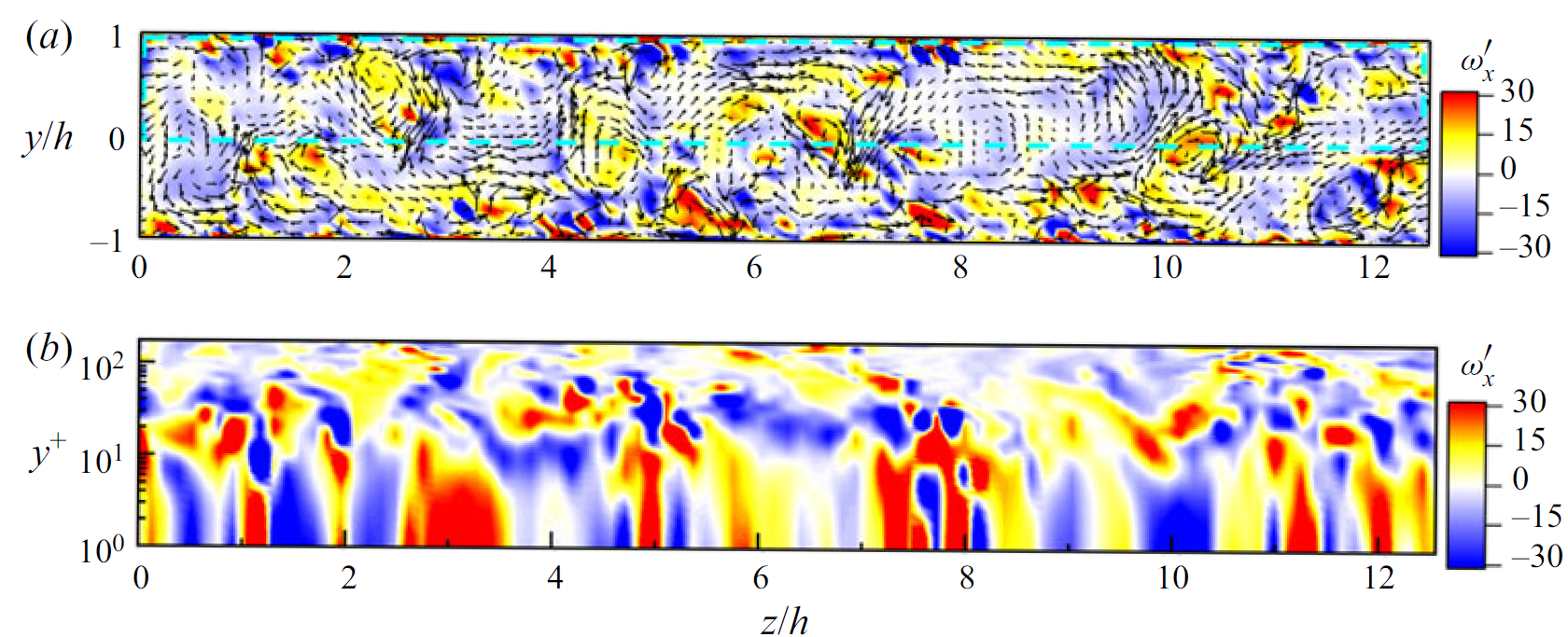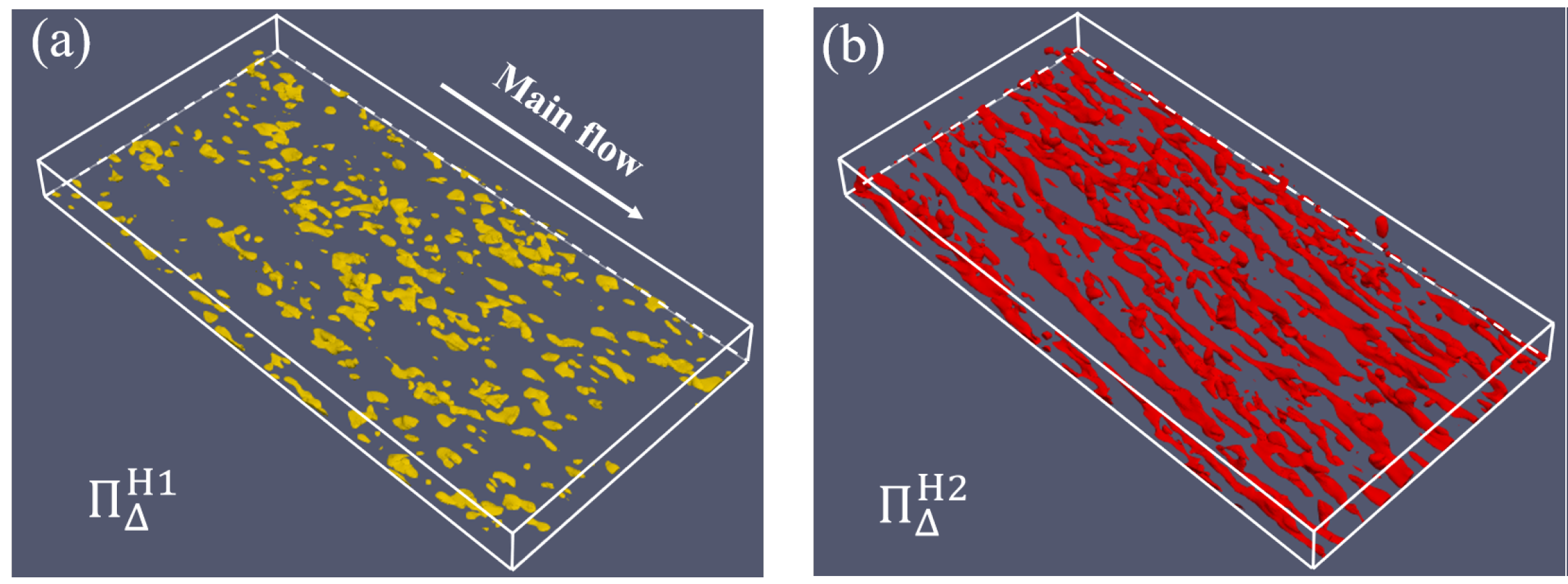Helicity is a second-order inviscid invariant in three-dimensional turbulence, which plays a key role in the evolution of turbulent systems. The research on the basic theory of helicity is very important to improve the performance of aero-engine, gas turbine and other key equipment.
In the past few decades, the helicity effect was mainly used to explore the internal mechanism of turbulence, but the statistical properties of helicity in turbulence, especially anisotropic turbulence, were rarely studied. Based on the large-scale simulation of turbulent channel flows with streamwise rotation by the compressible turbulence team of LHD, the space and scale of distribution, anisotropic and across-scales transfer, and the flow structure distribution in the near-wall area, etc, were systematically studied. In this study, several new phenomena and mechanisms were found, such as the spatial distribution of helicity with obvious characteristic of chiral separation and the unified expression and interpretation for the first and second Prandtl secondary flows supported by helicity distribution, etc. This study will provide a necessary theoretical basis for more complex research on rotating wall turbulence theory and application technology.

Fig. 1. (a) The distribution of Taylor–Grotler vortexes in the near wall ;(b)Contours of the fluctuating streamwise vorticity which can be used to present near-wall heical structures.

Fig. 2. The spatial-structure distributions of two different helicity flux channels:(a) the first channel;(b)the second channel
The study has been published in the Journal of Fluid Mechanics (doi:10.1017/ JFM.2022.250) with Changping Yu as the first author and Xinliang Li as the corresponding author. This work was supported by the National Key Research and Development Program of China (2019YFA0405300 and 2020YFA0711800), and the National Natural Science Foundation of China (NSFC grant nos 12072349 and 91852203). Researcher Zixuan Yang provided the numerical simulation codes for part of this research.